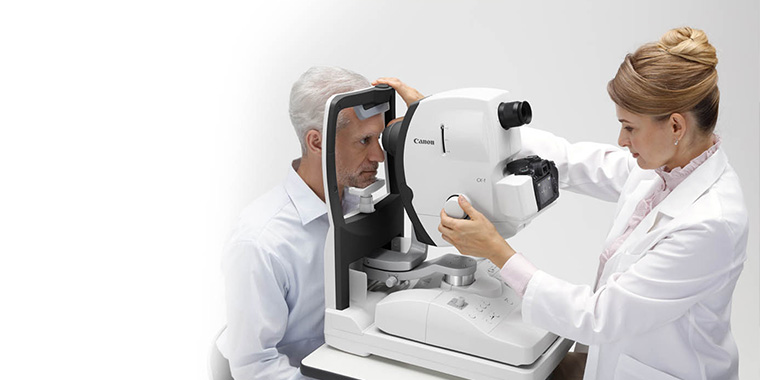The Benefits And Drawbacks of Various Refractive Surgeries for Enhanced Eyecare

LASIK Surgical Procedure
LASIK surgical treatment is a generally performed refractive treatment that intends to correct vision problems such as nearsightedness, astigmatism, and farsightedness. This surgical technique has actually obtained appeal due to its performance in giving people with clearer vision and reducing their dependence on glasses or get in touch with lenses. Throughout the treatment, a thin flap is created on the cornea, and a laser is utilized to improve the underlying cells, correcting the refractive error. The flap is then repositioned, permitting for fast recovery and very little pain for the patient.
One of the main advantages of LASIK surgical procedure is the quick enhancement in vision experienced by numerous clients. Most people observe a considerable enhancement in their eyesight quickly after the treatment, with minimal downtime needed for healing. Furthermore, LASIK is known for its high success price and low incidence of difficulties when done by skilled surgeons. Like any kind of surgical treatment, LASIK also lugs some risks, including completely dry eyes, glare, halos, and under or overcorrection of vision. It is essential for individuals considering LASIK surgical procedure to go through a complete evaluation by an eye treatment professional to establish if they appropriate candidates for the treatment.
PRK Treatment
The PRK treatment, also referred to as Photorefractive Keratectomy, is a kind of refractive surgical treatment that aims to deal with vision concerns comparable to LASIK surgery. Unlike LASIK, which involves developing a flap in the cornea, PRK works on the surface layer of the cornea. Throughout the PRK treatment, the outer layer of the cornea, called the epithelium, is eliminated to allow improving of the underlying corneal tissue with an excimer laser. This reshaping helps to fix refractive mistakes such as nearsightedness, astigmatism, and farsightedness.
One of the benefits of PRK over LASIK is that it removes the danger of flap-related difficulties since no flap is created throughout the surgical procedure. Despite the longer recovery period, PRK can be a suitable choice for individuals looking for vision correction surgery.
SMILE Surgical Procedure
An innovative refractive surgical treatment method getting appeal in the field of ophthalmology is SMILE Surgical treatment. Tiny Laceration Lenticule Extraction (SMILE) is a minimally invasive procedure that corrects vision by improving the cornea utilizing a femtosecond laser. Unlike typical LASIK surgical treatment, SMILE Surgery entails creating a little laceration in the cornea to draw out a lenticule, which results in much less disturbance to the corneal structure and possibly much faster recovery times.
One of the main advantages of SMILE Surgery is its capacity to deal with nearsightedness (nearsightedness) and astigmatism with high precision, leading to exceptional visual outcomes for people. The minimally intrusive nature of the procedure likewise minimizes the threat of issues such as completely dry eye disorder, making it a beneficial option for people looking for refractive surgical procedure.

LASEK Strategy
Having checked out the benefits and considerations of SMILE Surgery, an additional notable refractive surgical treatment strategy worth examining is the LASEK Strategy. LASEK, which represents Laser-Assisted Subepithelial Keratectomy, is a form of laser eye surgical procedure that aims to correct refractive errors such as myopia (nearsightedness), hyperopia (farsightedness), and astigmatism.
Unlike LASIK, LASEK does not include developing a corneal flap. Rather, throughout a LASEK treatment, the surgeon makes use of a watered down alcohol option to loosen up the thin outer layer of the cornea, called the epithelium. This layer is then carefully relocated aside to allow the laser to reshape the underlying corneal cells. As soon as the cornea has actually been improved to the wanted level, the epithelial layer is repositioned.
Among the primary benefits of LASEK is that it can be appropriate for individuals with slim corneas who may not be excellent candidates for LASIK. In addition, LASEK right here commonly leads to minimal post-operative pain and a quicker recovery time contrasted to PRK. Nevertheless, the visual healing process with LASEK might be somewhat longer than with LASIK.
Implantable Get In Touch With Lenses
Implantable Contact Lenses use a long-term vision improvement service for people seeking an alternative to typical call lenses or glasses. These lenses, additionally referred to as phakic intraocular lenses, are operatively inserted into the eye to deal with refractive mistakes such as myopia (nearsightedness), look at here hyperopia (farsightedness), and astigmatism. cardiologist andalusia. Unlike typical get in touch with lenses that rest on the surface of the eye, implantable contact lenses function within the eye itself, supplying clear vision without the requirement for day-to-day maintenance or elimination
One of the essential benefits of implantable contact lenses is their durability. When put, they can stay in the eye forever, offering regular and stable vision modification. In addition, these lenses can be an outstanding choice for people that are not good candidates for laser eye surgical treatment or that favor a reversible vision adjustment procedure.
Nevertheless, implantable get in touch with lenses do lug some threats, consisting of the possibility for cataracts or raised eye stress. It is essential for individuals considering this choice to consult with an eye care expert to establish if implantable contact lenses are the best option for their particular requirements and eye health and wellness.
Final Thought
Finally, each kind of refractive surgery has its very own benefits and negative aspects. LASIK surgical procedure is preferred for its fast recovery time, while PRK procedure may appropriate for patients with slim corneas. SMILE surgical procedure uses very little discomfort during the procedure, yet LASEK strategy might have a longer healing process. Implantable contact lenses offer an option for those who are not appropriate prospects for standard surgical procedures. People must talk to their eye treatment copyright to establish the best alternative for their specific demands.

Generally, SMILE Surgery offers a promising choice for people looking to improve their vision via refractive surgery.